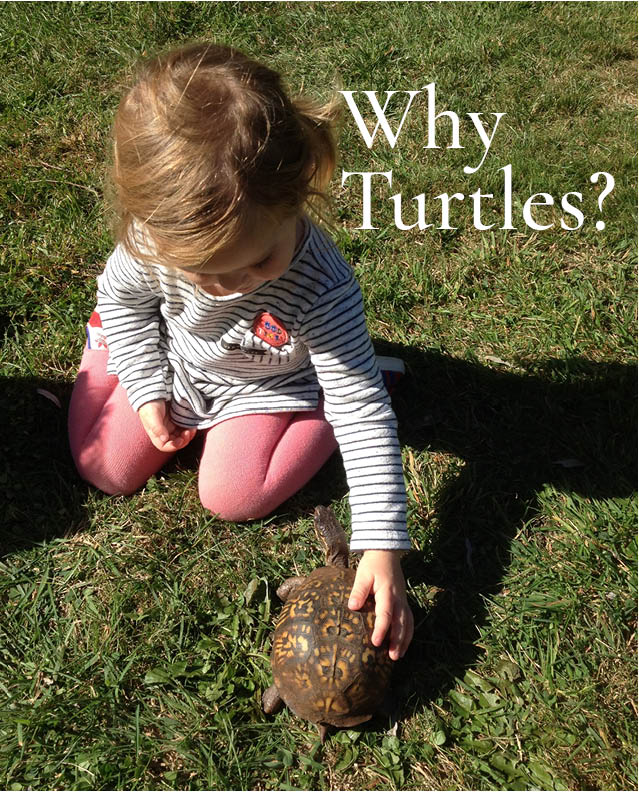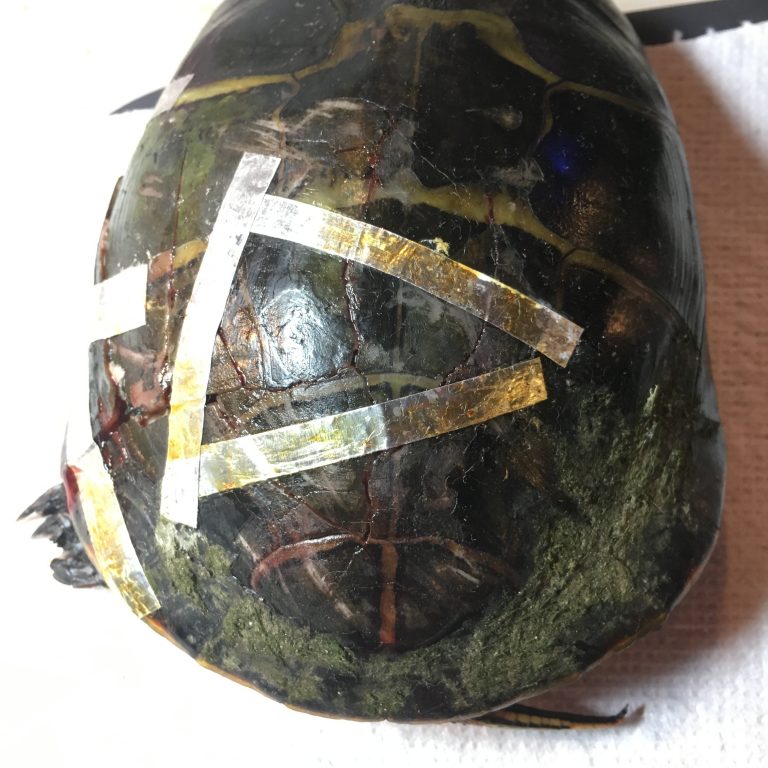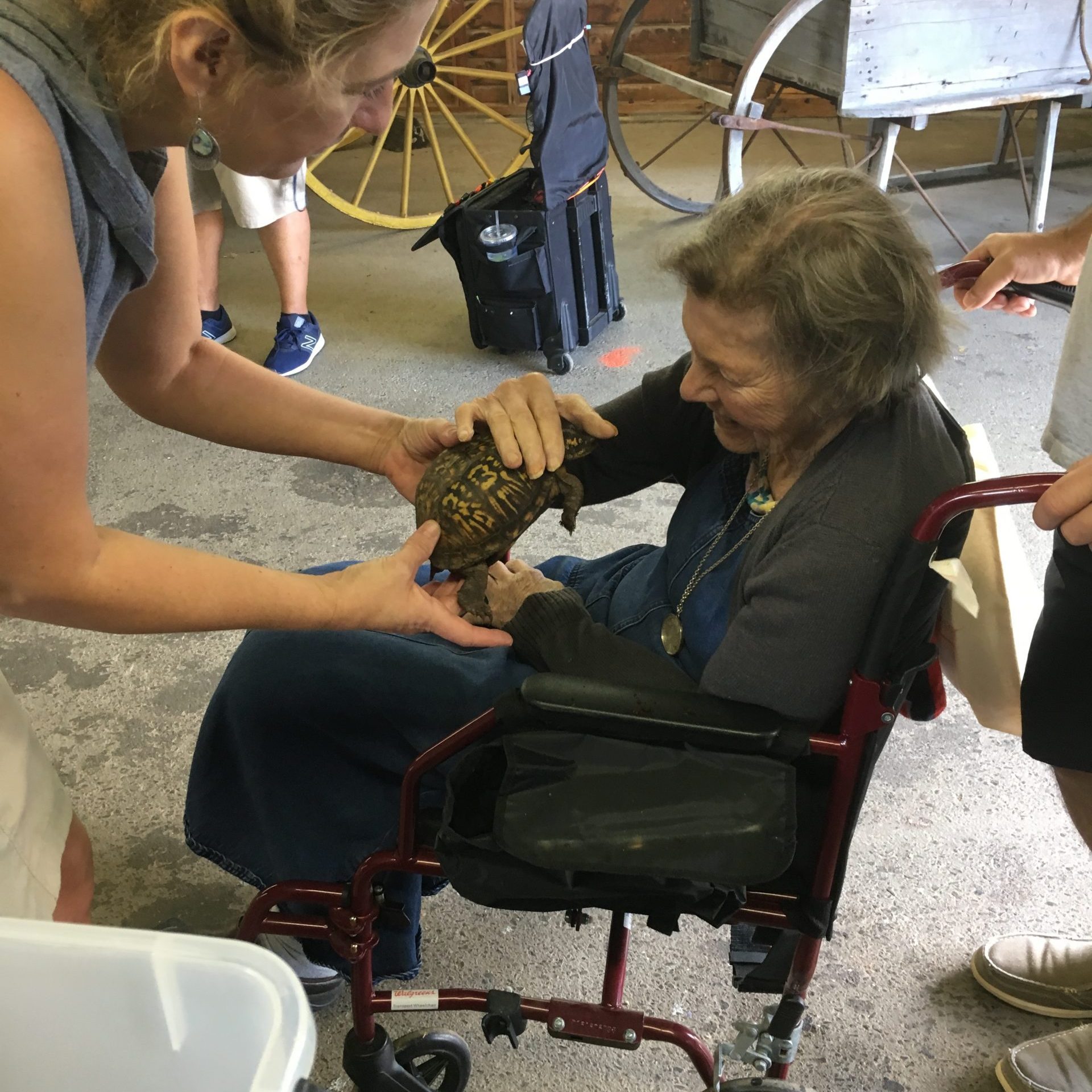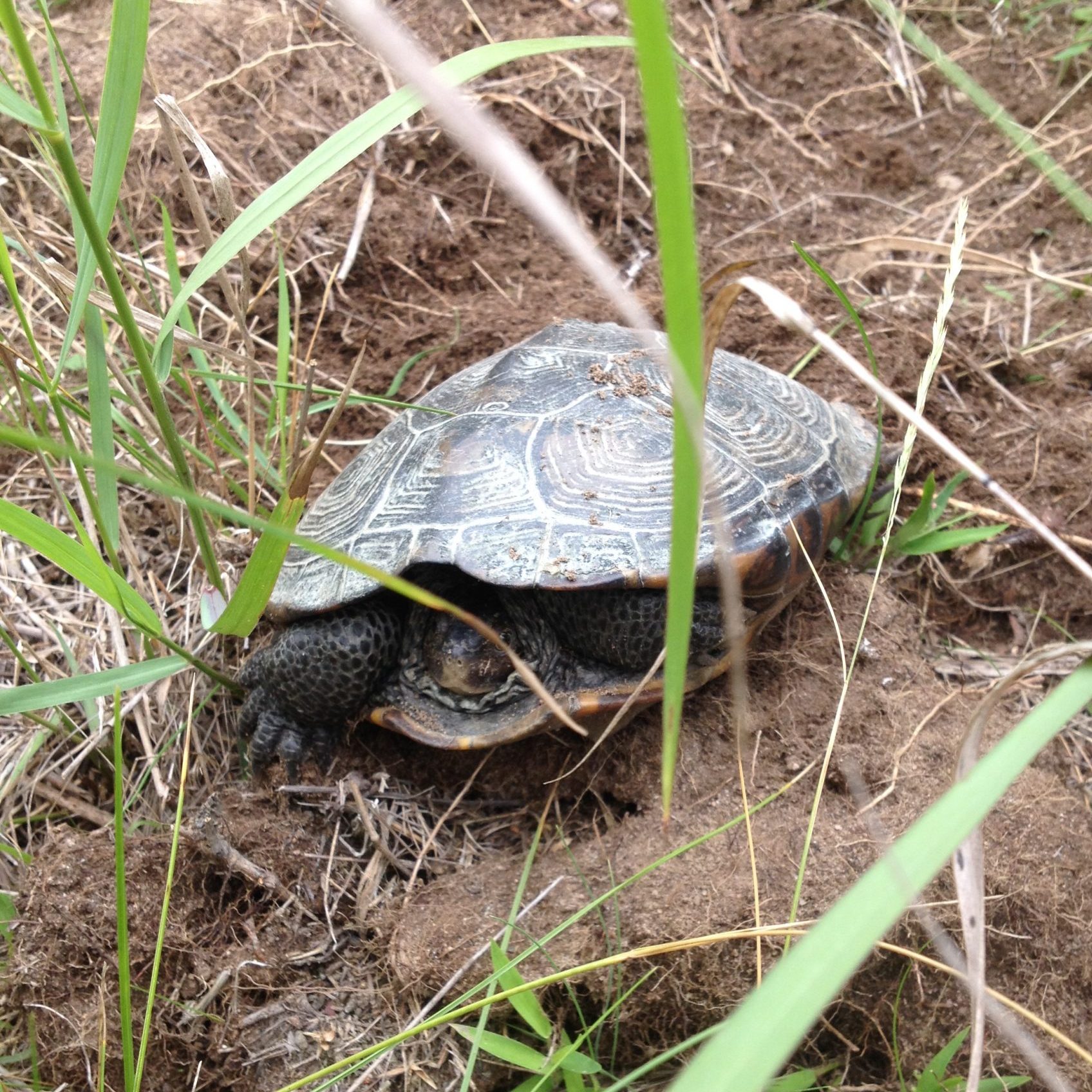
One of the fondest childhood memories Pam Meier has is that of a box turtle who visited her yard every summer. She would keep the turtle for just a few days before releasing it, and became very attached to it over the years. Little did she know that that relationship would have a profound influence on her adult life.
When she became permitted as a wildlife rehabilitator in 2015, Pam had to choose which animals to work with. Wildlife rehab is an entirely volunteer occupation, and trying to treat every type of animal is prohibitive. Each has different needs–habitats, diets, medications, even schedules. Considering the sheer amount of work and resources that go into the job, Pam wanted to focus her efforts on species that really need help. With her old friend the box turtle now on the endangered species list, she realized that turtles need all the help they can get, and The Turtle’s Back was born.
Turtles are one of the oldest yet most threatened groups of animals on earth. Three of Maine’s seven resident turtle species are on the state’s List of Endangered, Threatened or Special Concern Species. (Rehabilitation of migratory species, like sea turtles, requires a Federal permit.) Habitat loss, road mortality, human collection and predation continue to take huge tolls. As a long-lived reptile that’s slow to mature and reproduce, it takes a turtle many decades to simply replace itself. After 3 million years on earth, their future is now uncertain.
The Turtle’s Back now takes in as many as 100 turtles each year and provides phone support for many more, primarily between May and July when females travel up to a mile to nest, crossing dangerous roads in the process. During peak season it is essentially a full-time ER! And although many animals can be released the same season, some require a year or more to fully heal, so the work continues year-round. As a 501(c)3 nonprofit organization, TTB relies on donations to keep that work going.
As one of the few experienced rehabilitators specializing in turtles, Pam shares her knowledge with other rehabbers, offering training seminars and mentoring apprentices. She has also developed a foil tape shell repair technique which was published in the National Wildlife Rehabilitators Association Journal in 2021 and is now widely used.
What is Wildlife Rehabilitation?
The goal of wildlife rehabilitation is to provide professional care to sick, injured, and orphaned wild animals so ultimately they can be returned to their natural habitat. Wild animals that sustain injuries or illnesses preventing them from living successfully in the wild usually are euthanized (have their suffering ended in a humane fashion). Occasionally, animals that have recovered from their injuries but are not able to survive in the wild are placed in educational facilities.
Wildlife rehabilitation is not an attempt to turn wild animals into pets. Patients are held in captivity only until able to live independently in the wild. Fear of humans is a necessary survival trait for wild animals and every effort is made to minimize human contact and prevent the taming of rehabilitation patients. Often wildlife rehabilitation is an elaborate and time-consuming process.
Wildlife rehabilitators work with veterinarians to assess injuries and diagnose a variety of illnesses. Due to the important differences between wild animals and domestic animals, rehabilitators need extensive knowledge about the species in care, including natural history, nutritional requirements, behavioral issues, and caging considerations. Rehabilitators must also be able to administer basic first aid and physical therapy, and understand any dangers the animals may present to rehabilitators.
Almost all birds are protected by federal law; state laws protect most other kinds of wildlife. To work with mammals, reptiles, and amphibians, wildlife rehabilitators must be issued special permits from their state wildlife agencies. Before receiving these permits, individuals must meet various requirements such as specialized training, participation in mentorship programs, facility inspections, and written or oral exams. Rehabilitators who wish to care for birds also must obtain permits from the US Fish & Wildlife Service. Once they are permitted, conscientious rehabilitators continue their education by attending conferences, seminars, and workshops, keeping up with published literature, and networking with others in the field.
Because of their training, wildlife rehabilitators can help concerned people decide whether an animal truly needs help… Rehabilitators…can [also] suggest humane, long-term solutions when conflicts arise between humans and their wild neighbors.
– excerpted from the National Wildlife Rehabilitators Association website
“Although the turtles may not be able to say it, I know that they would say, ‘Thank you,’ as do we. Each life is beyond value. If you have the chance to save even one life, that is an action that can never be repaid. We understand the effort you have put into rescuing turtles so that they may always exist on earth. You are a true hero.” – Kate, eighth grader
Rehabilitation

First and foremost, The Turtle’s Back is a state-permitted wildlife rehabilitation facility specializing in the treatment of injured or sick native turtles. Our overarching goal is to return healthy animals back to their wild homes. From rescue to release, egg to adult, if it’s a native Maine turtle, we handle it…with care. More about our work is here.
Education
Turtles are among the oldest, yet least understood creatures with which we share the planet. Their future depends on our ability to coexist with them. We strive to educate the public about native turtles, their plight how to help them, and simply how to live happily with them. Learn more about our programs here.

Conservation

We believe that the overarching goal of wildlife rehabilitation must be preservation. With three of Maine’s seven resident turtle species listed as species of special concern, threatened or endangered, it’s critical to be involved in mitigating threats to their survival, not just treating individual animals. Read more here.

